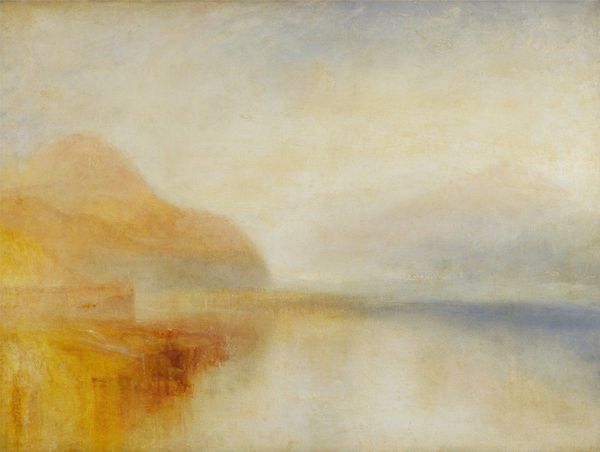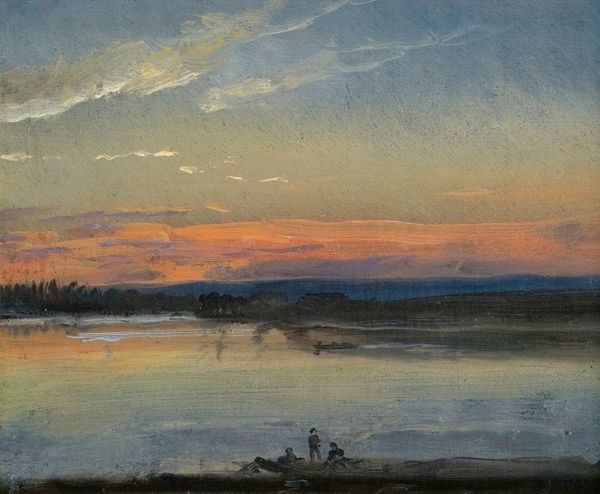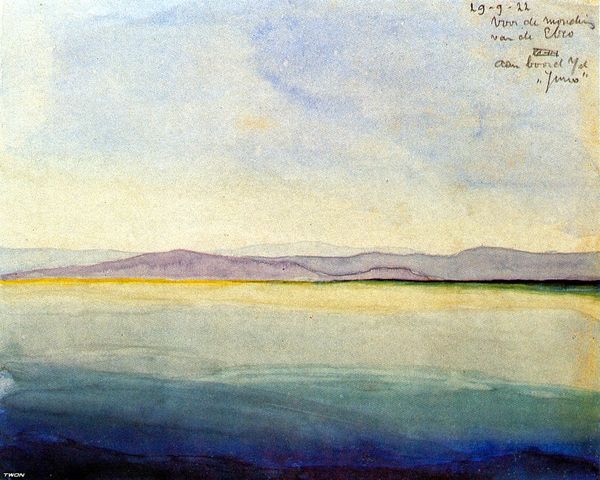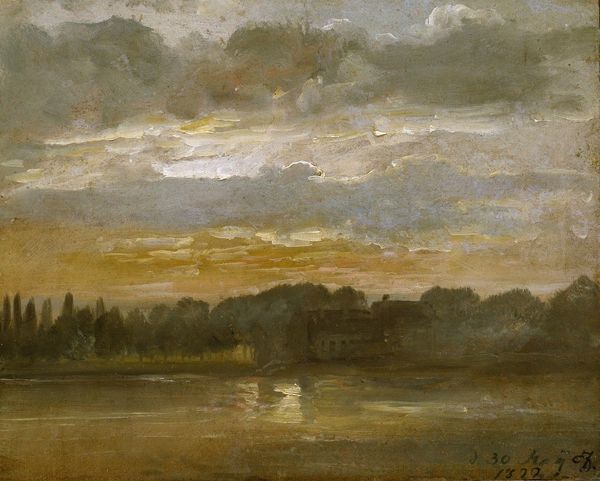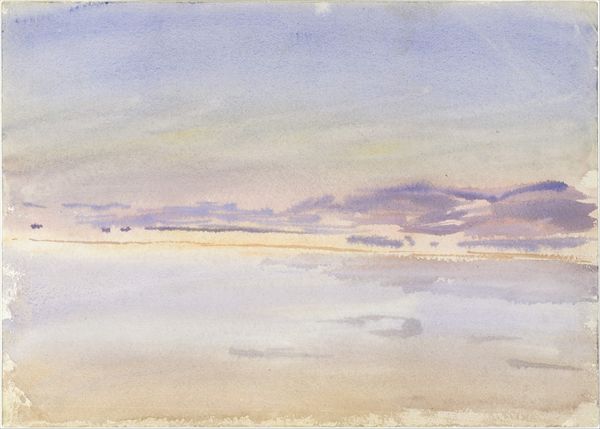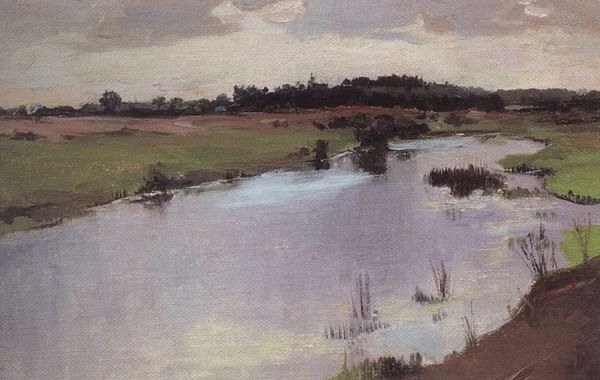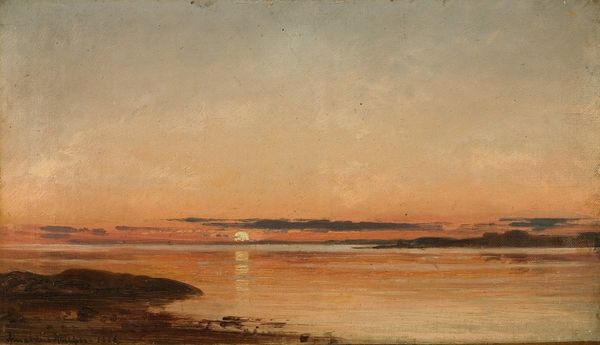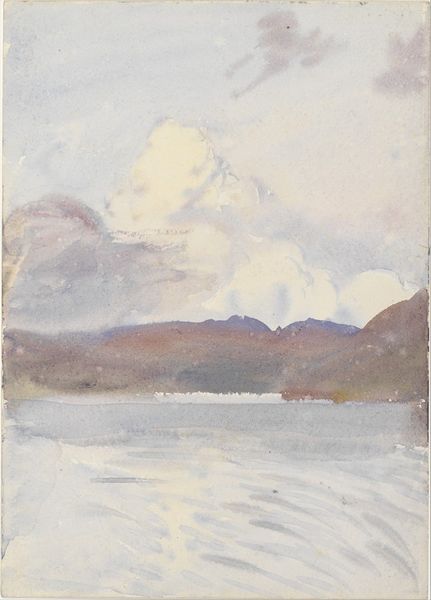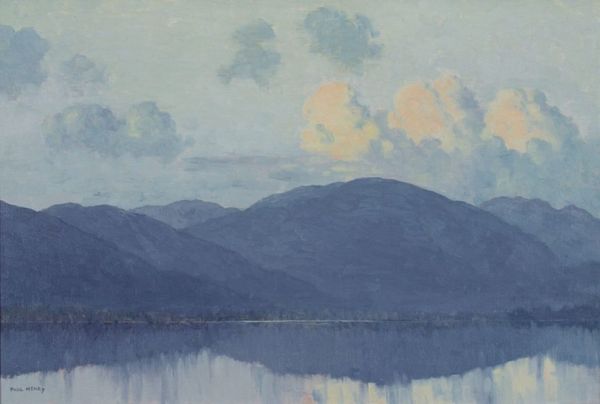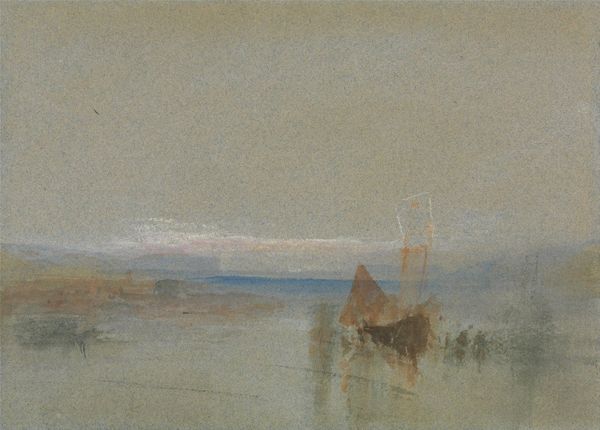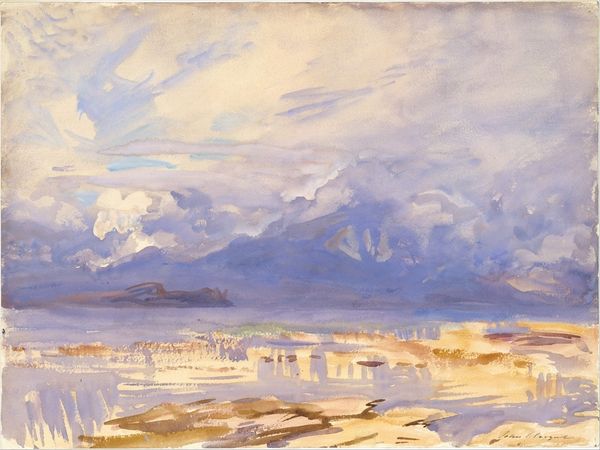
Copyright: Public Domain: Artvee
Editor: We are looking at Albert Edelfelt’s "Seashore in the Evening," painted in the 1890s using watercolor. It's beautifully subtle; the muted colors and broad strokes create a hazy, dreamlike effect. What strikes you most about this piece? Curator: This work, on the surface, presents a tranquil landscape, typical of Impressionist plein-air painting. But let's consider its historical context. Edelfelt was a Finnish painter working during a period of intense Russification. Do you see the potential for interpreting this seemingly placid scene as a subtle expression of national identity? Perhaps the vast, open landscape symbolizes Finnish resilience and connection to their land. Editor: That’s interesting! I hadn’t considered that. I was focusing on the pure aesthetics, the light and the reflections. Curator: Exactly! And that's perfectly valid. However, in the late 19th century, landscape painting was frequently employed as a vehicle for nationalist sentiment. How might the absence of figures in this landscape contribute to that reading? Editor: It feels less specific, almost universal. If there were people depicted, we might assume more about the scene itself. But as it is, it becomes about a generalized ideal or essence of a place. Curator: Precisely! So, consider the implications of this "universal" landscape in the context of Finnish resistance against Russian cultural dominance. It's a quiet resistance, an assertion of identity through a connection to nature. And water, specifically, what connotations does water have for borderlands and connections to other lands? Editor: I guess I initially missed the quiet politics embedded within such a pretty picture! Curator: Art is always political, on some level, even when it appears not to be. Considering that helps unpack deeper meanings. Editor: I'll definitely look at landscapes differently from now on! Curator: Wonderful! Art history, at its best, invites us to see the world, and history, anew.
Comments
No comments
Be the first to comment and join the conversation on the ultimate creative platform.
